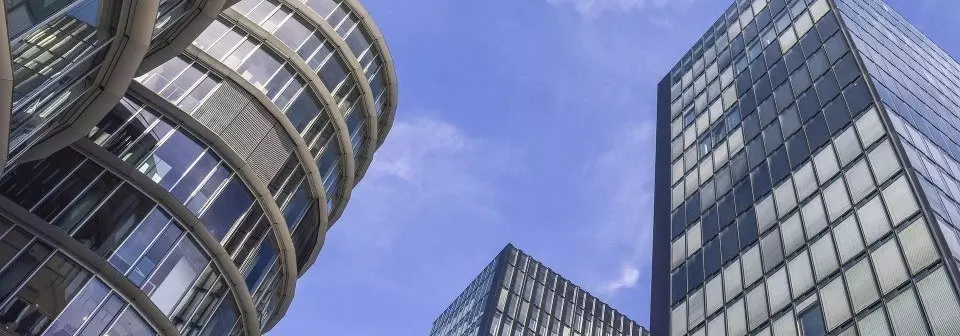What are the types of commercial property? This article looks at what is commercial real estate and the different types of commercial property.
What is Commercial Real Estate?
Commercial real estate refers to property used exclusively for business-related and workspace purposes instead of as living spaces. Commercial real estate involves tenants leasing the property to conduct activities that generate profit.
Individuals also indirectly invest in commercial real estate by putting money into publicly traded real-estate investment trusts, also known as REITs.
These properties produce rental income and provide capital appreciation potential for investors. As a result, investors require a lot more capital for commercial real estate than residential real estate. Another negative point of commercial real estate is that they necessitate more regulations and higher renovation costs.
It's not all negative, however: commercial real estates are high-yielding sources of income, with stable cash flows from long-term renting tenants and hedging against the stock market.
Commercial real estate involves commerce, as residential properties involve human habitation. Multi-purpose rental properties are classified as commercial activities because they serve as residences for tenants.

What are the Different Types of Commercial Property?
Commercial properties are typically leased out, held, or resold by individuals, companies, and corporations to make money. There are various commercial properties, including residential duplexes, retail outlets, warehouses, and restaurants. There are different types of commercial property for the different types of businesses that provide different needs to various social groups.
According to the Town and Country Planning Order of 1987, the types of commercial properties are divided into classes or use classes. A commercial building had its category of occupancy determined by this order. The property classification system helped planners allocate businesses to the correct premises that provide them with the utilities needed for their business.
It also allowed planners to ensure an area has no properties that house specific commercial businesses to remove complaints concerning that type of business, for example, converting pubs and other drinking establishments; classified as A4 commercial use, into restaurants and cafes; classification as A3 use, to lessen the amount of alcoholic drinking culture in an area.
Read on for the five main categories of commercial properties and their known category according to the Order of 1987 and how these classifications have slightly changed since September 2020.
Why Does A Business Need Security?
Offices
Office properties can be either urban or suburban. Office buildings in the former location can be high-rise properties and skyscrapers. Suburban offices, however, are smaller and commonly closer together, for example, in office parks.
Office buildings can also refer to studio spaces that are laid out differently from offices in that there are usually fewer desks and more open spaces. These spaces are popular in towns and cities for being used by creative businesses like artists, jewellers, and photographers.

Office buildings can be single-tenanted, multi-tenanted, or built to suit. It will belong to a business owner and their managers, who help run the offices day-to-day, ensure everything runs smoothly and that customers use the space properly. They come in three tiers, named by The Building Owners and Managers Association International (BOMA) to be Class A, Class B, and Class C.
Class A offices have state-of-the-art systems and impressive accessibility. They are usually prestigious buildings with office users that pay above-average rent. These offices are commonly placed in prime locations, such as in city centres with high-quality infrastructure.
Class B, on the other hand, compete for office users with rents in the average range for the area. The building systems are adequate, and the overall building quality is average because the buildings are usually older. Investors target these buildings for restoration purposes.
Thirdly, Class C offices are purely functional buildings with rent below the average for the area. The age of the properties can range from 15 to 20 years, and most are in desperate need of maintenance. Examples of Class C are medical offices.
Offices tend to be classified under A2 or B1, according to the Order of 1987, which were commercial buildings that involve business or financial and professional services.
Retail

Properties that house restaurants and retailers are known as retail properties. They usually have multiple tenants, such as lead tenants or anchors, that bring traffic to the property. Other instances involve single-use and stand-alone retail properties.
Retail tenant types come in a broad range. Common types are discount stores, grocery chains, salons, pharmacies, restaurants, and banks.
According to the Order of 1987, A1 was the classification for shops. The rules for A1 commercial properties were for the retail sale of goods other than hot food, selling tickets, selling cold food to be consumed off of the premises, displaying goods for sale, hiring domestic or personal goods, and the reception of goods to be washed, cleaned, or repaired. It also included travel agencies, post offices, and hairdressers.
The Order of 1987 also determined that banks, betting offices, and other financial and professional services were categorised as A2 and needed to be appropriately located in shopping areas.
Industrial

Industrial buildings are located outside urban areas and next to major transportation routes for the convenience of space. Since industrial buildings are low-rise, they are typically built in groups to make industrial parks. There are bulk warehouses, heavy manufacturing, light assembly, and flexible industrial properties.
Bulk warehouses are known for being large distribution centres. Heavy manufacturing buildings are heavily customised with machinery to operate services and produce goods. The purpose of light assembly industrial buildings is for storage or product assembly. Flexible industrial properties are self-explanatory in that they may contain a mix of office and industrial spaces for multiple purposes.
Industrial businesses were classified by the Order of 1987 as having B class use. The new commercial property uses classifications as of September 2020 state that this remains the same classification. B1 class refers to industrial purposes of commercial properties, including offices, research and development studios, and industrial processes in high-tech industries or laboratories. B2 properties allow general industrial uses that do not fall within B1 to B7. Storage and distribution facilities are examples of B8 use that take place in either wholesale warehouses, repositories, or distribution centres.
Leisure

Commercial properties used for leisure purposes are typically known in public spaces for being hotels (C1 use), spas, pubs (A4), restaurants and cafes (A3), indoor and outdoor sports facilities, amusement parks, cinemas, music and concert halls, dance, sports halls, swimming baths, skating rinks, gymnasiums, bingo halls, and casinos.
Despite the range of leisure buildings being so broad, they can be reduced to simply: Establishments that can provide accommodation, meals, and tourist and traveller services. Leisure buildings need specific licensing to prepare and serve alcohol and food.
The Order of 1987 determined that A3 appropriates the sale of food and drink and for them to be consumed on the premises, such as in snack bars, restaurants, and cafes. The new commercial property uses classifications as of September 2020 state that cafes and restaurants remain within their A3 classification.
Healthcare
Commercial buildings for healthcare include medical centres, hospitals, and care and nursing homes. Healthcare buildings are any facility property that provides medical and healthcare services to the public.
Dental practices and alternative medicine practices also fall under the healthcare category. Healthcare buildings can be based anywhere and subject to different legislation dictated by the type of healthcare.
Commercial buildings that house healthcare facilities were usually referred to by the Order of 1987 as having C2, F1, or C2 and F1 uses. Residential institutions that involve residential care homes, hospitals, and nursing homes had C2 uses. F1 uses occur in non-residential institutions, such as clinics, health centres, day nurseries, and consulting rooms.
The new commercial property uses classifications as of September 2020 state that commercial, business, and service uses that come under the new Class E include clinics, health centres, creches, and day centres and nurseries, which classify as D1.
New Commercial Property Use Classifications
As of September 2020, commercial land and buildings can be used as long as they accord with new rules and regulations. The different types of buildings and land use have effectively been split into classes A-F by these implementations, which outline each work or process that can legally occur on the said premises. For example, a property may not legally sell alcohol but may be able to hold a shop.
However, recent changes have changed the Order of 1997, where parts of class A have been changed to class E in the same way that class D is now known as class F. You should check with a local council about whether you can still use your current space the same way as before these rules were implemented or not before making any drastic changes to your business.
Class E is the new class for commercial, business, and service. The class's subcategories permit the use, part use, or deny use for the following: The display or retail sale of goods except for hot food, the sale of food and drink where it is largely consumed on the premises, indoor sports, recreation, and fitness, providing a day nursery or centre without residential use, the provision of financial/professional/appropriate business services, and the provision of medical and health services, except for attachments to residences of the consultants or practitioner.
The recent legislation only permits the use of commercial property in a residential area as long as there is no detriment to operational or administrative offices, research and development of products or processes, or industrial processes.
Class F is split into sections F.1 and F.2, respectively. F.1 has seven legal uses for commercial buildings and land: educational institutions, artwork displays except where the artwork is for sale or hire, museums, public libraries, public halls, public places in connection with worship or religious instruction, and law courts.
Section F.2 is split into four subcategories: Shops that sell essential goods, local community halls and meeting places, places for outdoor sports and recreation that don't involve firearms or motorised vehicles, and indoor and outdoor swimming pools or skating rinks.
Sui generis, or a class of its own, is a section of its own. This list includes theatres, amusement arcades, funfairs, launderettes, fuel stations, taxi businesses, hostels, bingo halls (D2), warehouse clubs, casinos, public houses (A4), drinking establishments (A4), hot food takeaways (A5), live music performance venues (D2), cinemas (D2), concert halls (D2), and motor vehicle hires sales and displays.
Are you looking for security shutters and doors for commercial buildings in Manchester? We offer commercial and domestic doors and shutters offering security for your home or business.

